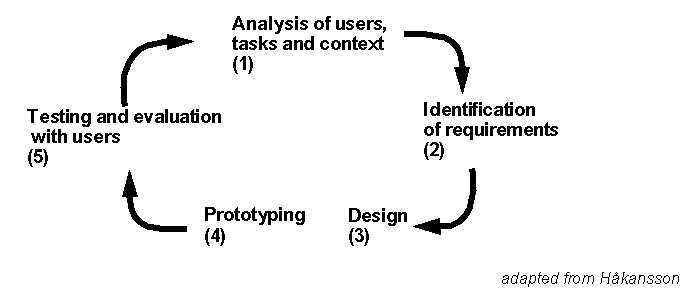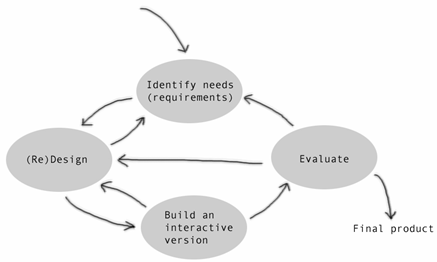Participatory design
Jump to navigation
Jump to search
Definition
Participatory design is a form of user-centered design: It
- involves users as much as possible so that they can influence it
- integrates knowledge and expertise from other disciplines than just IT
- is highly iterative so that testing can insure that design meets users' requirements
Preece, Rogers et Sharp argue for a similar model:
Key principles
According to the Participatory Design page / DAIMI there a four key elements. (Summary made by DSchneider 14:56, 3 May 2006 (MEST))
- Cooperating: "Participatory design stresses the issue of cooperation within system development projects. Cooperation stresses two fundamental principles: the"egalitarian" principle which assumes that all stake-holders within a design process are juxtapositioned, all are experts in certain areas and more like novices in others; and the co-working principle which assumes that a design process is a learning process for both computer systems developers and users"
- Experimenting: ideas are or may be embedded within current conditions, i.e. the design process always takes place in the space between new possibilities and current conditions. Experimentation has the dual purpose of inventing the new at the same time as it has to ensure that it is both desirable and realizable for current work practice.
- Contextualizing: Setting and situations are particicular. Participants have a variety of backgrounds, with partly overlapping, and partly conflicting interests and concerns and which have to be dealt with.
- Iterating: The not-yet-known, the future product also draws from the point of view of use (e.g. users playing with proto-types in various stages).
Links
- Maria Håkansson, Intelligent System Design, IT-university, Goteburg, Design Methodology slides, Series of HTML Slides (As of 2013, dead link, lost slides)
- MUST, Site of a danish Method for Participatory Design, includes a good short description.
- Participatory Design Computer Professionals for Social Responsibility
References
- Kensing, F., J. Simonsen, and K. Bödker (1998): "MUST - a Method for Participatory Design", Human-Computer Interaction, Vol. 13, No. 2, Lawrence Erlbaum Associates, Inc., pp. 167-198.
- Preece Jenny, Yvonne Rogers and Helen Sharp (2002), Interaction Design, Wiley, ISBN: 0471492787
See computer science HCI repositories for more, e.g.

